Restoring Canals, Bayous, and Waterways on Mobile Bay & Alabama’s Gulf Coast
Professional Dredging Services in Gulf Shores – Restoring Alabama’s Coastal Waterways
-
Mobile Bay & Gulf Coast Waterways
-
Canal, Bayou & Dock Access Restoration
-
Tidal Sediment & Storm Surge Solutions
-
Navigation Channel & Brackish Water Maintenance
Where The River State meets the coast, water management in Mobile Bay & Alabama’s Gulf Coast is dominated by tidal influence and the complex flow of the Mobile–Tensaw Delta. Coastal communities in Gulf Shores, especially those along canals and bayous, frequently experience shoaling from fine silt and sand brought in by tides and displaced by tropical systems. We specialize in removing these coastal sediments to restore essential dock access and protect waterfront property.
Why Gulf Shores Waterway Owners Choose Us
Dredging in Mobile Bay & Alabama’s Gulf Coast is drastically different from inland Alabama's river-fed lakes. Here, the challenge is managing tidal influence, mitigating post-storm surge damage, and navigating the unique brackish waters and canal systems of Gulf Shores. We are the only team whose equipment and expertise are focused purely on the Gulf Coast’s challenging coastal sedimentation and erosion issues.
Deep Coastal Water Knowledge
- Our team understands the dramatic shift from freshwater river flow to the salinity and tidal influence of Mobile Bay and the Mobile–Tensaw Delta.
- We work with the specific brackish conditions of the Alabama Gulf Coast.
- Focused on protecting marsh shoreline and sensitive coastal habitats.
Silt, Sand & Storm Deposit Experts
- We specialize in managing the fine silt and sand deposits that rapidly fill coastal canals and bayous, often displaced by storm surge during the hurricane season.
- We focus on the soft, *marsh* soils of Coastal Alabama and their unique challenges, avoiding the 'red clay' mentality of inland regions.
- Protecting your waterway from rapid coastal inlet silting.
Corps of Engineers & Coastal Permitting
- We are experts in permitting through the Army Corps of Engineers for work on the federally-maintained Gulf Intracoastal Waterway and navigation channels.
- Compliance on Mobile Bay is complex, and we handle all the regulatory demands for large-scale coastal maintenance.
- Experience with ADEM and local rules governing coastal erosion and fill projects.
Canal Neighborhood & Marina Specialists
- We serve the canal-front neighborhoods, bayou communities, and large marinas along the Alabama Gulf Coast.
- We restore dock access and maintain coastal inlet silting where tidal shoaling is a constant battle for property owners.
- Understanding the specific maintenance needs of boat lifts and waterside infrastructure in coastal Alabama.
Family & Heritage Bay Properties
- We preserve the history of multi-generational properties and traditional fishing camps that rely on navigable water for their livelihood in this coastal part of The River State.
- Dedicated to ensuring families can continue their tradition of boating, fishing, and shrimping.
- Restoring access to your heritage waters that have been impacted by storm surge deposits.
Realistic Planning & Fair Pricing
- We plan projects around the sensitive peak tourism season and the unpredictability of the hurricane season.
- We provide transparent cost estimates that reflect the complex logistics of working down on the Bay.
- Our pricing reflects the practical needs of Gulf Coast communities, ensuring cost-effective solutions for silt and sand removal.
Specialized Dredging Services for Alabama

Mechanical Excavation Dredging
Ideal for coves on Lake Martin, Lay Lake, and neighborhood ponds across Alabama suburbs. We use sectional barges for precision sediment removal in smaller HOA lakes, handling heavy red clay and dense debris found throughout central and north Alabama.
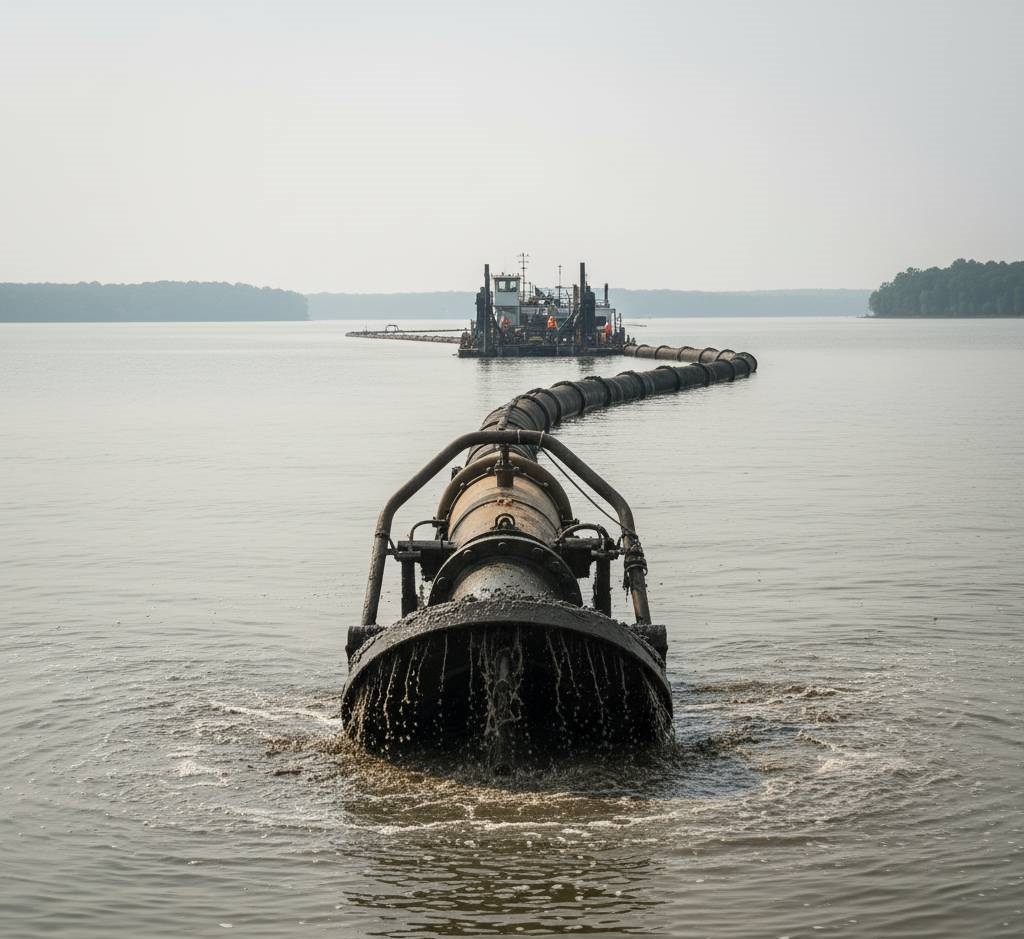
Hydraulic Pumping Systems
Best for large-scale operations on major water bodies such as Guntersville Lake, Wheeler Reservoir, and the Tennessee River system. Our equipment can pump fine silt and muck over long distances to remote dewatering sites, ideal for TVA reservoirs.
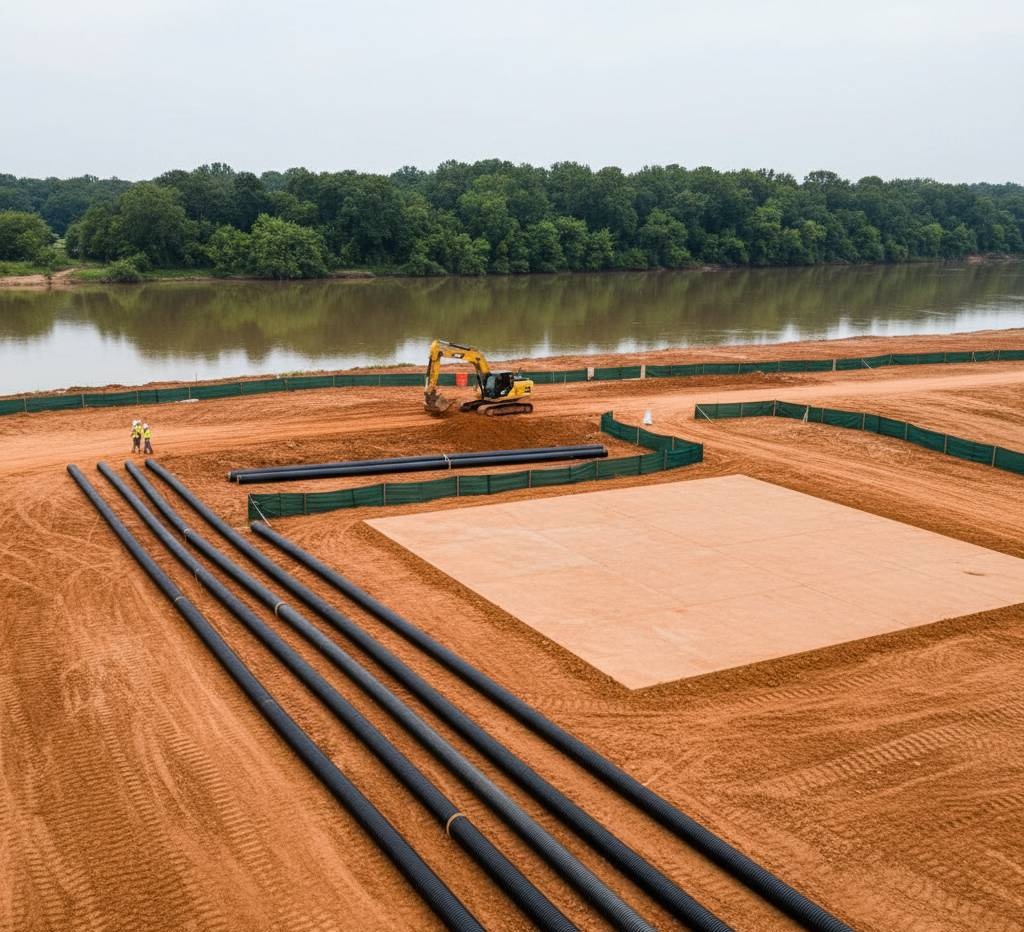
Integrated Sediment Management
A comprehensive approach ensuring compliance with ADEM regulations. This includes on-site dewatering using methods suitable for Alabama's diverse soils (from Tennessee Valley clay to Gulf Coast sand) with approved disposal or beneficial reuse planning.
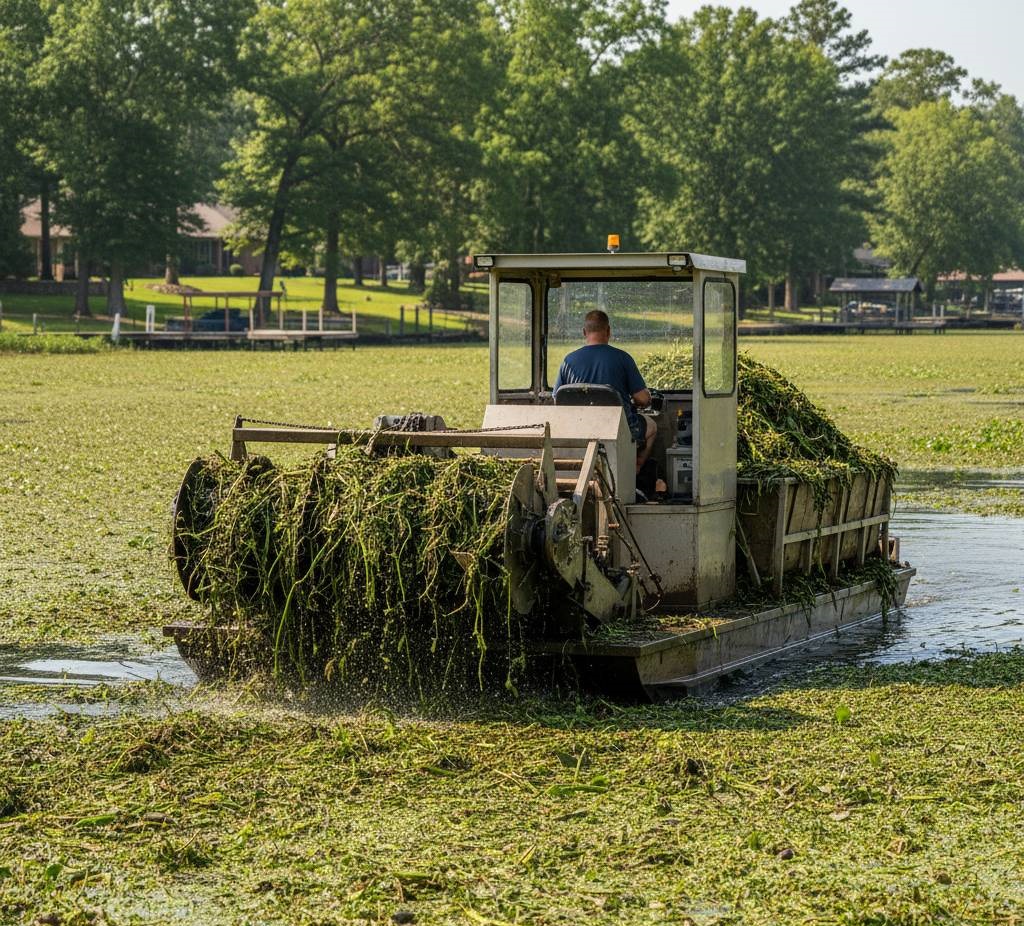
Aquatic Growth Control
Targeted removal of aggressive Alabama aquatic weeds—like hydrilla, water hyacinth, and milfoil—to combat the effects of shallow water and nutrient-rich sediment that cause severe weed infestations in our warm southern climate.
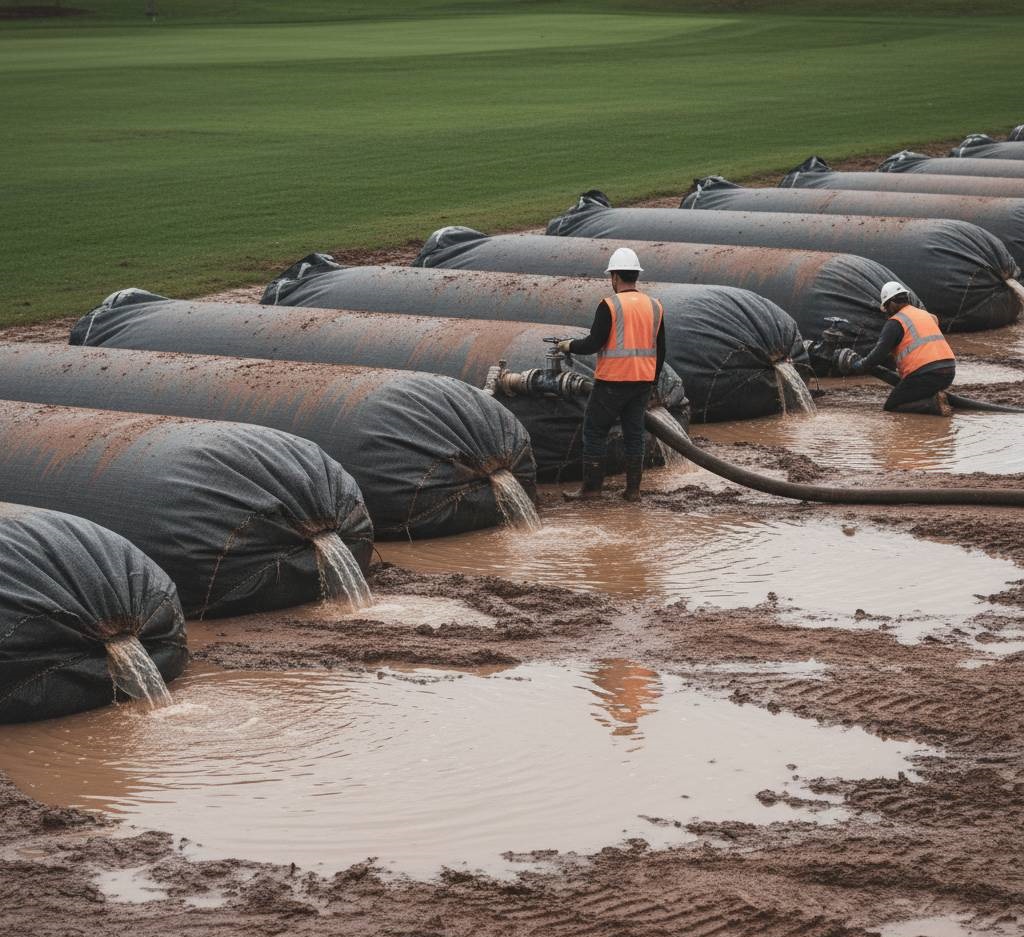
Advanced Dewatering Techniques
Installation and management of Geotextile tubes for efficient dewatering on HOAs, golf courses, and properties across Alabama. We also design and manage upland pad drying operations where available land permits, with special consideration for red clay disposal.
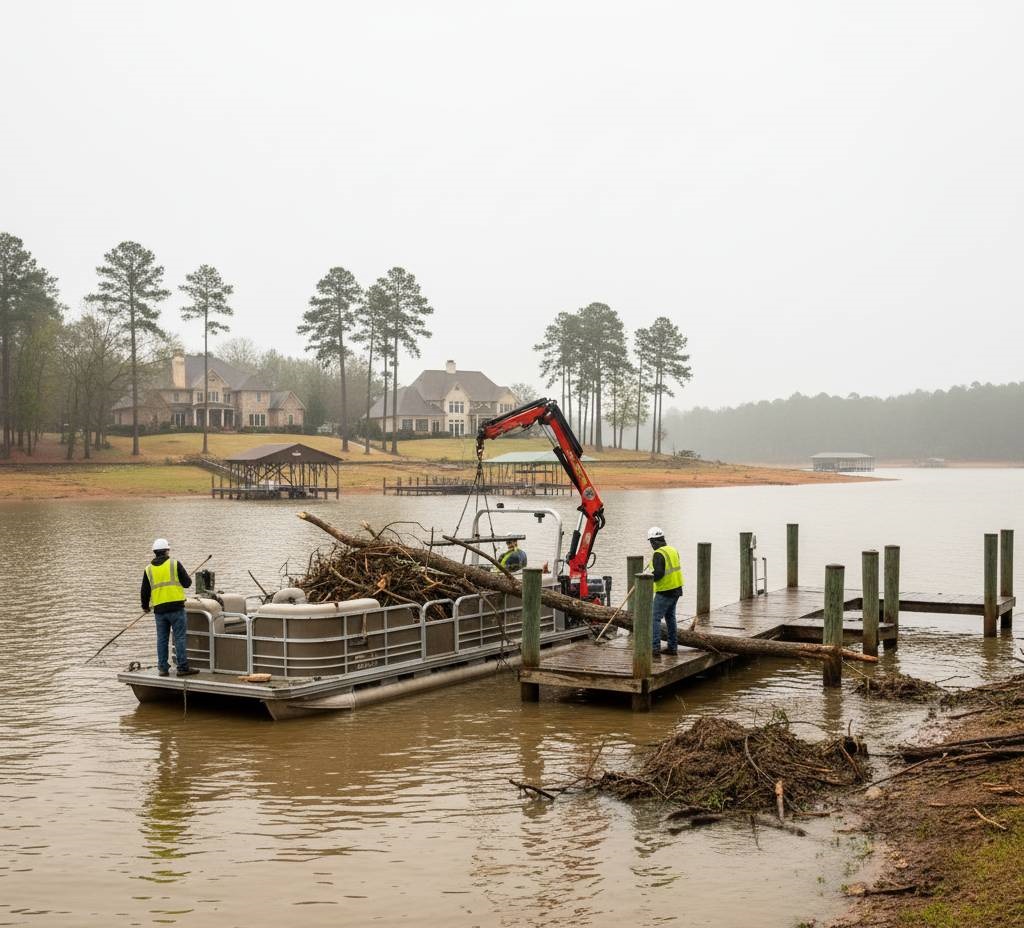
Waterway Maintenance Programs
Post-event cleanup and maintenance after major storms or TVA drawdowns. We offer season-based lake management programs to prevent sediment re-accumulation, particularly important during Alabama's hurricane season and seasonal water level adjustments.
Let's Talk About Your Gulf Shores Lake
Whether you're dealing with red clay sediment buildup, losing dock access, or just noticing your lake isn't as deep as it used to be, we can help. We'll come out, take a look, and give you straight answers about what needs doing and what it'll cost. No pressure, no sales pitch—just honest advice from folks who know Alabama lakes.
Common Questions from Gulf Shores Waterway Owners
Real answers about dredging Mobile Bay & Alabama’s Gulf Coast—based on projects across Gulf Coast communities
Do I need permits to dredge my Gulf Shores lake?
Almost always, yes. For any work near the coast, you require both ADEM and Army Corps of Engineers permits, especially near the Mobile–Tensaw Delta or the Gulf Intracoastal Waterway. We specialize in Corps permitting for navigation channel maintenance and understand the rules regarding coastal erosion and shoreline stabilization. We guide you through the process for the Mobile Bay area.
Good news is, we handle all that paperwork. We know who to call at ADEM and what they're looking for, so you don't have to worry about becoming an expert in state environmental law just to fix your waterway. That's worth something when you're trying to get your water system ready for the next rainy season.
What's the deal with Alabama's red clay sediment?
On the Alabama Gulf Coast, the sediment is typically soft, fine silt and sand that is constantly shifted by tides and boat traffic, rather than the heavy red clay found inland. Dredging here focuses on restoring depths lost to this constant shoaling in canals and bayous, particularly following large weather events like hurricanes.
The clay itself isn't harmful, but too much of it ruins water clarity and fills in swimming areas. We remove it carefully—the goal is getting your waterway back to proper depth and flow, not stirring up more problems. And once it's out and dewatered, that red clay actually makes excellent, stable fill material.
Where does the dredged sediment go?
Sediment removed from coastal inlets and canals on Mobile Bay must be carefully managed to protect the sensitive marsh and brackish water habitat. We employ efficient dewatering techniques and focus on legally compliant disposal, often utilizing the removed material for coastal erosion control where applicable and permitted by the Corps of Engineers.
The disposal method depends on sediment quality, your property layout, and local regulations. We'll explain all your options during the site visit and include disposal costs in our estimate so there are no surprises. Some property owners like keeping the material on-site; others prefer us to haul it away completely.
What type of dredging is best for my Gulf Shores property?
Due to the frequent need to move sediment long distances and the limited access in many canal-front neighborhoods and marinas, hydraulic pumping is often the most efficient technique on the Alabama Gulf Coast. However, mechanical dredging is used for severe storm surge deposits or deep-dredging navigation channels. The technique is always tailored to the tidal schedule and sediment type.
We're not trying to upsell you on equipment you don't need. We evaluate your specific situation to determine the least invasive, most efficient way to remove the sediment and restore the pond's original depth.
How much does lake dredging cost around Gulf Shores?
Costs on the Gulf Coast are heavily influenced by the complex permitting, the volume of material displaced by tropical systems, and the need to schedule around the peak tourism season. We provide clear, itemized pricing that accounts for working with the tide schedule and during the crucial off-season when conditions are best for efficient work down on the coast.
We'll give you a detailed estimate after seeing your property. No hidden fees or surprise charges. We want you to be confident in your investment.
When's the best time to dredge in Alabama?
The optimal window is the hurricane off-season, typically late fall through early spring (November to April). This minimizes weather risks, avoids peak tourism season conflicts, and allows us to take advantage of favorable tidal cycles for moving equipment and sediment within Mobile Bay & Alabama’s Gulf Coast.
Can we work in summer? Sure, but it's hot as blazes, afternoon thunderstorms can shut us down for days, and nobody wants to hear heavy equipment when they're trying to enjoy their property. We try to schedule around you, but fall/winter just makes more sense for everyone involved.
How long will my Gulf Shores dredging project take?
Projects to restore navigation in canals or marina basins can take 2-4 weeks. The timeline on the coast is often dictated by the tide schedule and the speed of dewatering the fine silt and sand that characterize the coastal part of The River State. We always aim for minimal disruption to Gulf Shores residents.
We stay in touch throughout the process and build realistic schedules. If your goal is having the area fully restored by next summer, call us in late summer or fall so we can get permits sorted and schedule work during the cooler months. We keep you updated every step of the way.
Will dredging hurt the fishing in my lake?
Dredging a silting canal or restoring a blocked navigation channel on the coast vastly improves the habitat by removing excessive sediment that harbors unwanted marine vegetation and brackish aquatic weeds. This restoration is vital for supporting the local fishing and shrimping culture in Coastal Alabama by ensuring access to deeper waters.
Most property owners tell us fishing gets better after dredging, not worse. Your family should have the same great pond and river experiences you remember.
Alabama Dredging Service Regions
We provide comprehensive dredging solutions across Alabama's diverse waterways, from the Tennessee Valley to the Gulf Coast, each with unique water management challenges and opportunities.
1. Central Alabama (Greater Birmingham + West AL + River Region)
The heart of Alabama, where the Magic City metro blends with suburban lake living, West Alabama's rich traditions, and the historic River Region. This corridor revolves around the Cahaba, Coosa, and Black Warrior Rivers, with popular waters like Lay Lake, Lake Jordan, and Lake Tuscaloosa shaping daily lake life. Here, Roll Tide and War Eagle fans live side by side along river-fed neighborhoods and community lakes.
Key AL Locations:
2. North Alabama (Tennessee Valley)
Defined by the Tennessee River and its TVA-managed reservoirs, North Alabama balances flowing river systems with backwater coves, tributaries, and sloughs. Work here focuses on keeping deep-water access, managing silt in current-affected areas, and addressing red clay and fine sediment that move with seasonal drawdowns and heavy rains.
Key AL Locations:
3. East Alabama – Auburn-Opelika & the Chattahoochee–Tallapoosa River Region
Where river systems and lake life meet. Anchored by the Auburn-Opelika corridor, East Alabama is shaped by the Chattahoochee and Tallapoosa Rivers with major regional waters like Lake Martin and Lake Harding, plus river-fed lakes along the Coosa chain (including Logan Martin and Neely Henry). Our work balances river current, watershed inflows, and red clay sediment that settles into coves, community lakes, and stormwater systems.
Key AL Locations:
4. The Wiregrass (Southeast AL)
A rural, agricultural landscape where ponds and warm-water rivers drive daily water management. The Wiregrass features the Choctawhatchee and Pea River watersheds, extensive farm and irrigation ponds, and subdivision retention systems. Projects focus on weed and algae control, sediment removal after heavy rains, and practical restoration for working properties and neighborhoods.
Key AL Locations:
5. Gulf Coast / Lower Alabama (LA)
Where The River State meets the coast. Mobile Bay, the Mobile–Tensaw Delta, and the Intracoastal Waterway define this coastal system, with tidal influence, brackish conditions, and storm-driven sediment movement. Canal maintenance, marina access, and post-storm recovery are core needs alongside year-round waterfront living and tourism.
Key AL Locations:
If you don't see your area listed, reach out — we frequently take on projects across rural lakes, private ponds, and unique waterfront properties throughout Alabama.